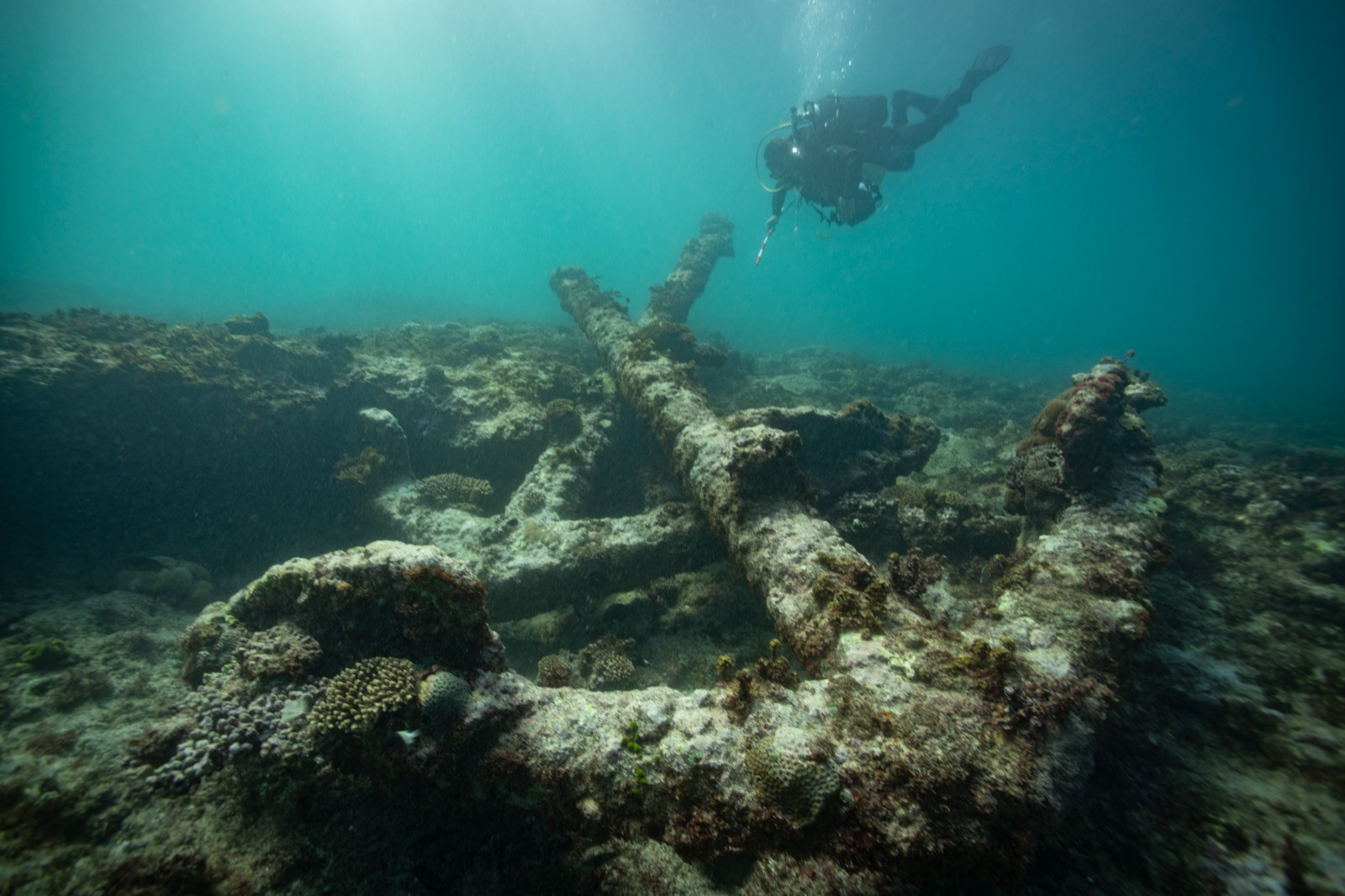
Anchors from the Nossa Senhora do Monte do Carmo shipwreck site in Salary Bay, Madagascar, lost 1774. The wreck continues to live as an artificial reef and represents a temporal datum point, forming a terminus post quem after which new benthic communities colonised the hard substrate. It was recently surveyed within the Rising from the Depths Project and a 3D digital model can be found at: https://skfb.ly/ovNnT
UN Oceans 2022: “Scaling up ocean action based on science and innovation for the implementation of Goal 14: stocktaking, partnerships and solutions”
The Maritime Archaeology Trust, as an accredited NGO within the UNESCO 2001 Convention on the Protection of Underwater Cultural Heritage (UCH) is responding to emphasise the role of cultural heritage in contributing to the success of SDG 14 and as a valuable resource that can contribute to the outcomes of the UN Decade of Ocean Science for Sustainable Development (2021-2030).
A healthy and resilient ocean: the UCH, in the form of wrecked vessels or structures on the ocean floor, is datable and can provide reference points against which the health of the ocean can be compared. When a ship is wrecked, it attracts benthic communities and becomes part of the marine environment. This provides a well defined time frame to compare ecological systems before and after the arrival of new substrates. As the UCH is numerous, global and represented throughout, and before, the historic period this it is a resource that can be used as an underwater laboratory.
Where the broad value of the UCH is recognised and respected, it will be better protected which in turn will protect the environment within which it is located.
A productive ocean: the physical remains of the UCH on the seabed provides firm foundations upon which marine life can grow. These develop into ecosystems to form artificial reefs that increase marine productivity. Such sites are attractive to fishers, but, more significantly, they can provide key elements for an environmentally sustainable tourism offer.
A predicted ocean: sea level fluctuations have had an impact on humanity from the earliest times. People have needed to adapt to this change and while doing so, they have left archaeological artefacts behind. This includes tools, structures and settlements. Where these survive, they are often within landscapes that were inundated as sea level rose. Collectively, this provides a resource that can be dated and analysed scientifically to provide high resolution data that can be used to understand past climatic variations and human responses. These past events are causal and they continue to set the foundation for future change. When we understand the impacts caused by the ongoing change we are better prepared to predict the future of ocean change.
An inspiring and engaging ocean: the UCH encompasses the history of humankind. This is represented by artefacts on the ocean floor that were left behind by the earliest migrants that crossed from one continent to another when sea was lower, but also includes the remains of shipwrecks that ended on the sea floor once sea levels rose. Each element offers a narrative that provides a building block to our collective memory, memories that are particularly relevant to coastal communities. Today, this UCH is a resource that attracts and engages, and as such can be used positively to link societies with their past and provide a sense of collective wellbeing, and that can enhance our understanding of the oceans through Ocean Literacy pathways.
To help achieve this outcome, the data collected from the UCH can provide wisdom from hindsight where the lessons
learned from the past can be used to inspire, engage and inform.
We call upon the UN to take Ocean Action:
• Acknowledge the essential role of cultural heritage in delivering sustainable development in our seas and oceans,
noting in particular the relevance to the Ocean Decade of the UNESCO’s Thematic Indicators for Culture in the 2030
Agenda;
• Acknowledge the power of cultural heritage as a medium for engaging the public in addressing the sustainability of
our coasts, seas and oceans to investigate, protect and celebrate long-standing relationships between people and the
sea around the globe;
• Recognise the value of the cultural heritage to inform patterns of long term change that can help predict future
outcomes;
• Recognise the importance of cultural heritage stakeholders in enabling ocean scientists, and to form innovative
partnerships to work together to deliver SDG 14.
This statement is presented by Garry Momber, Director, Maritime Archaeology Trust
You can find out more about the UN Oceans Conference 2022 here.
